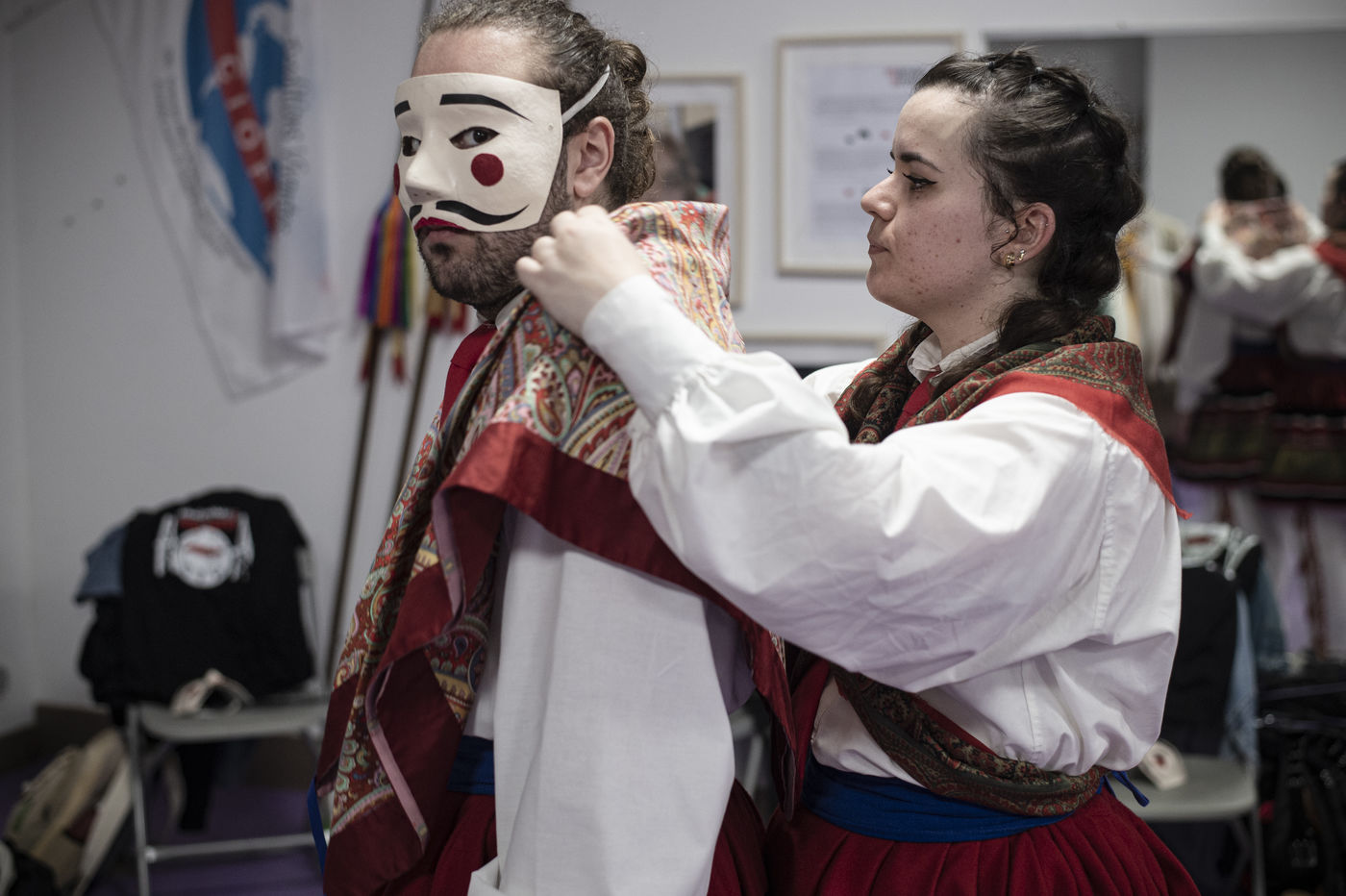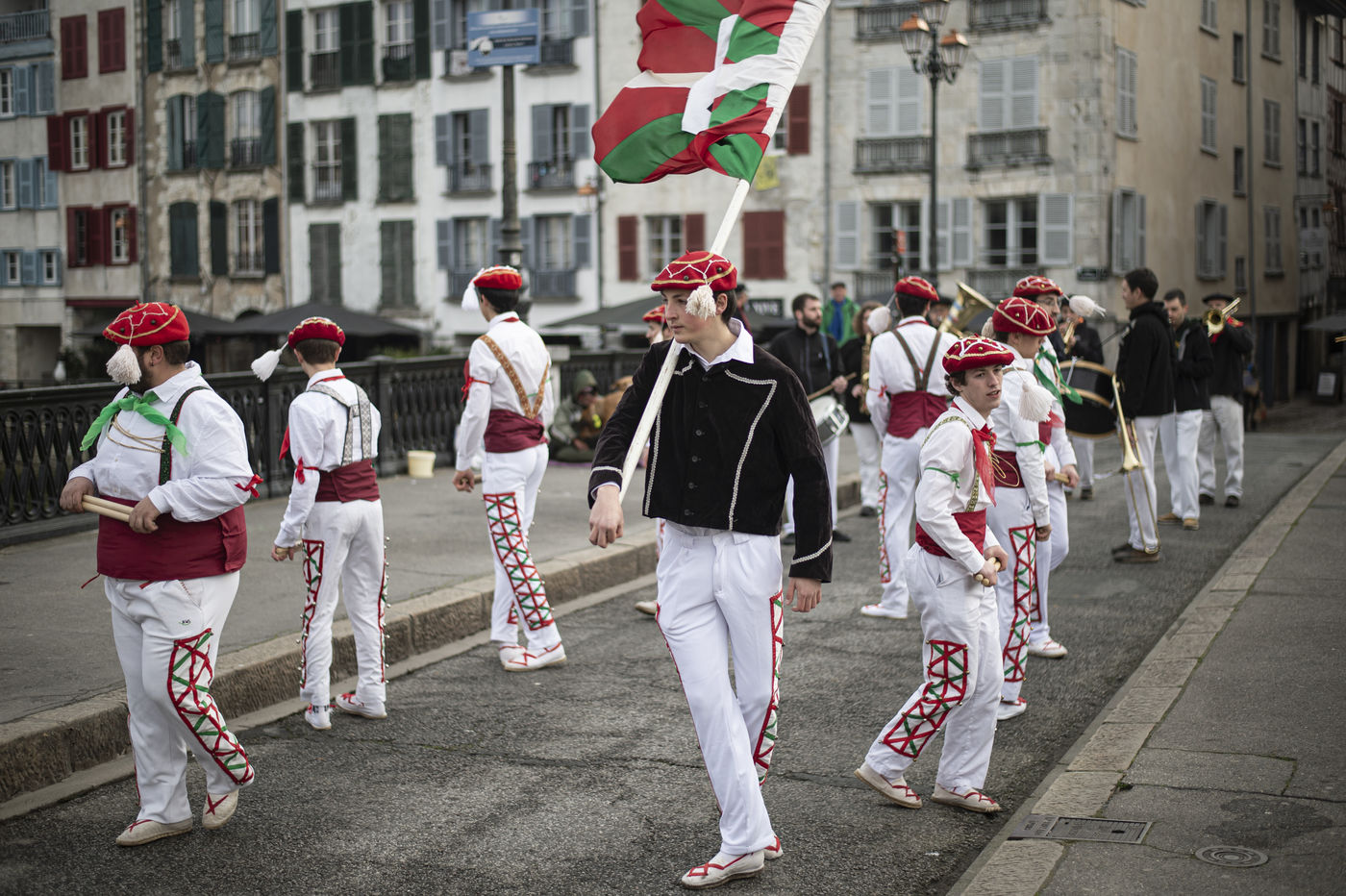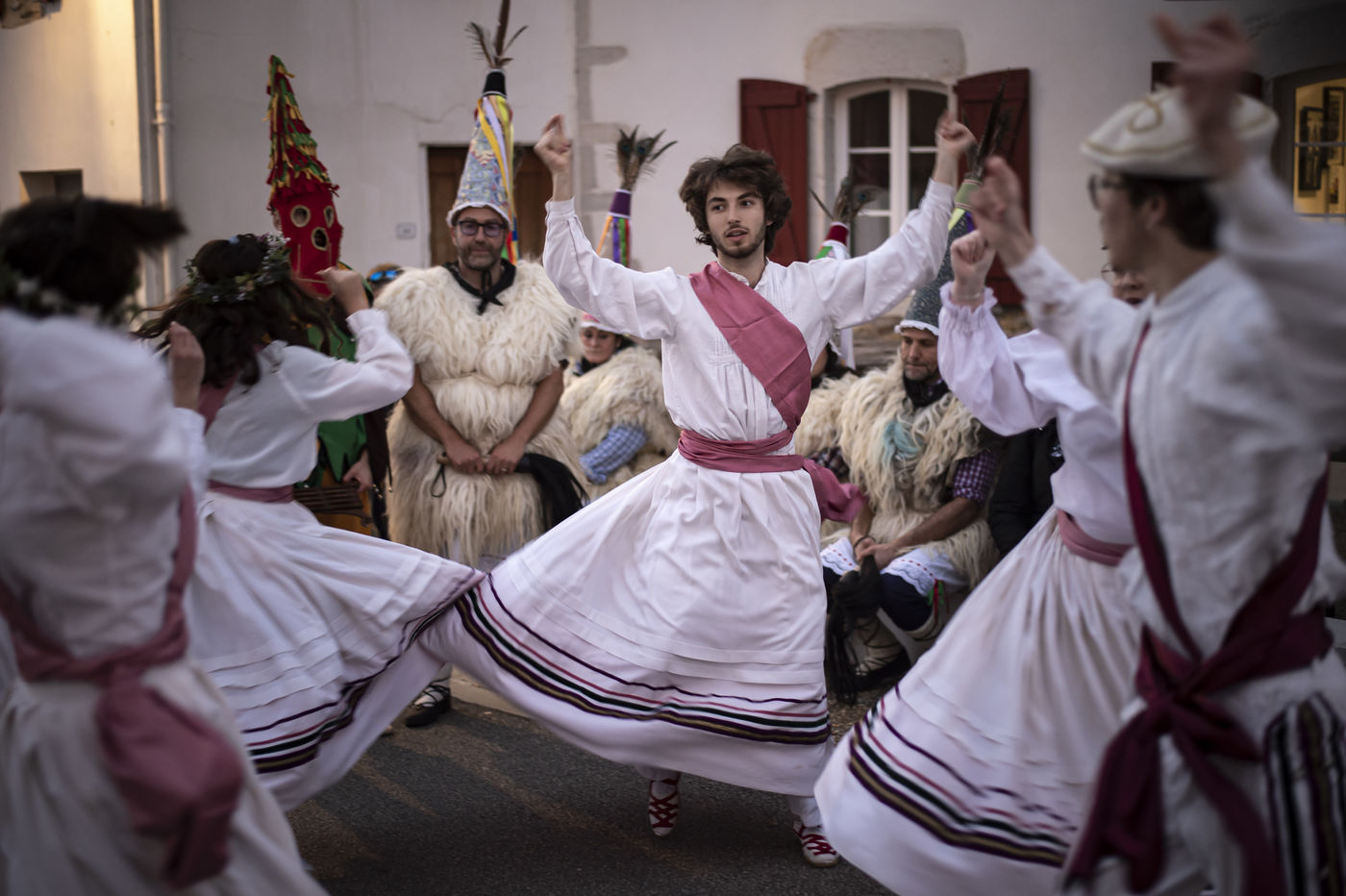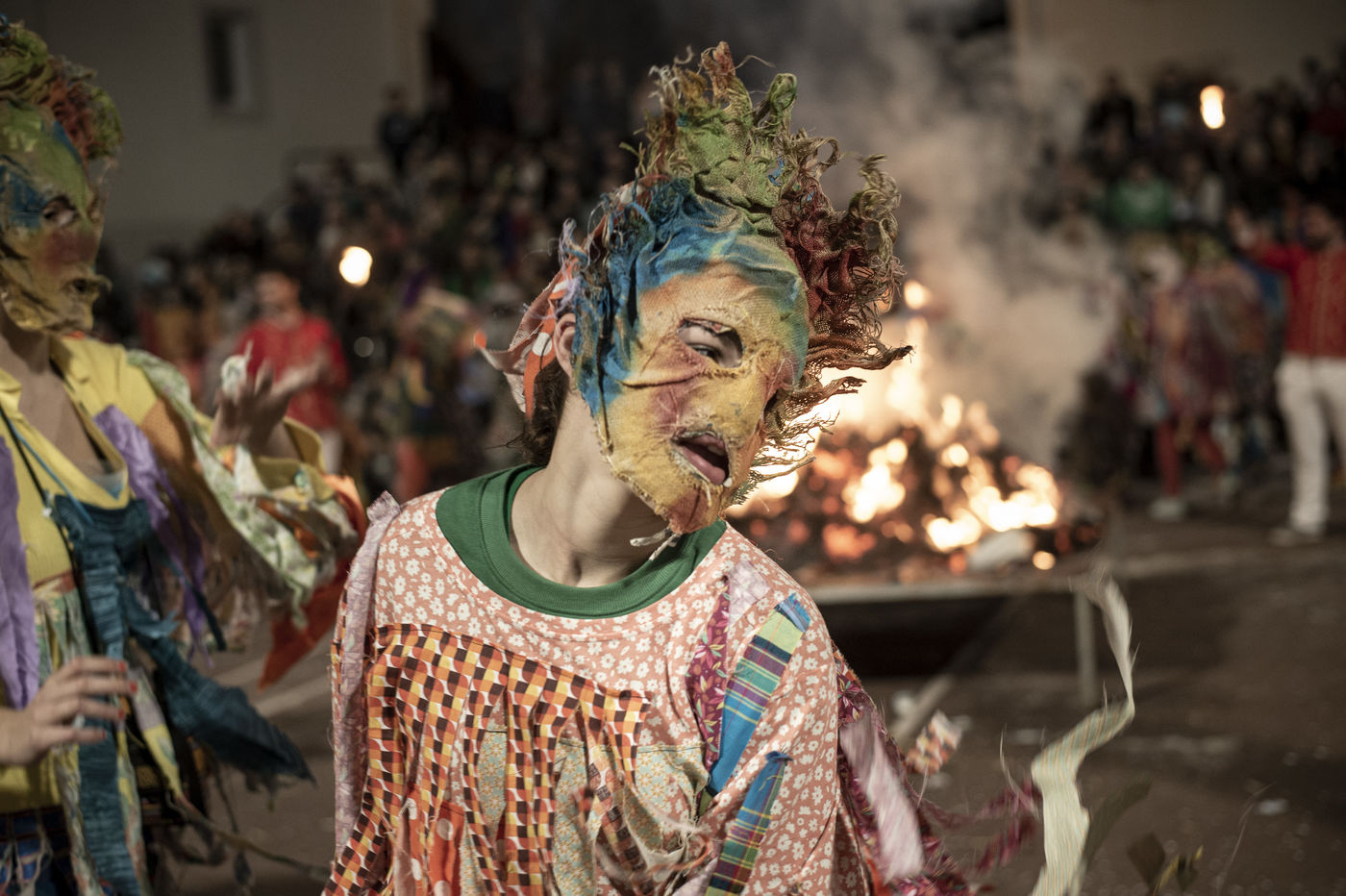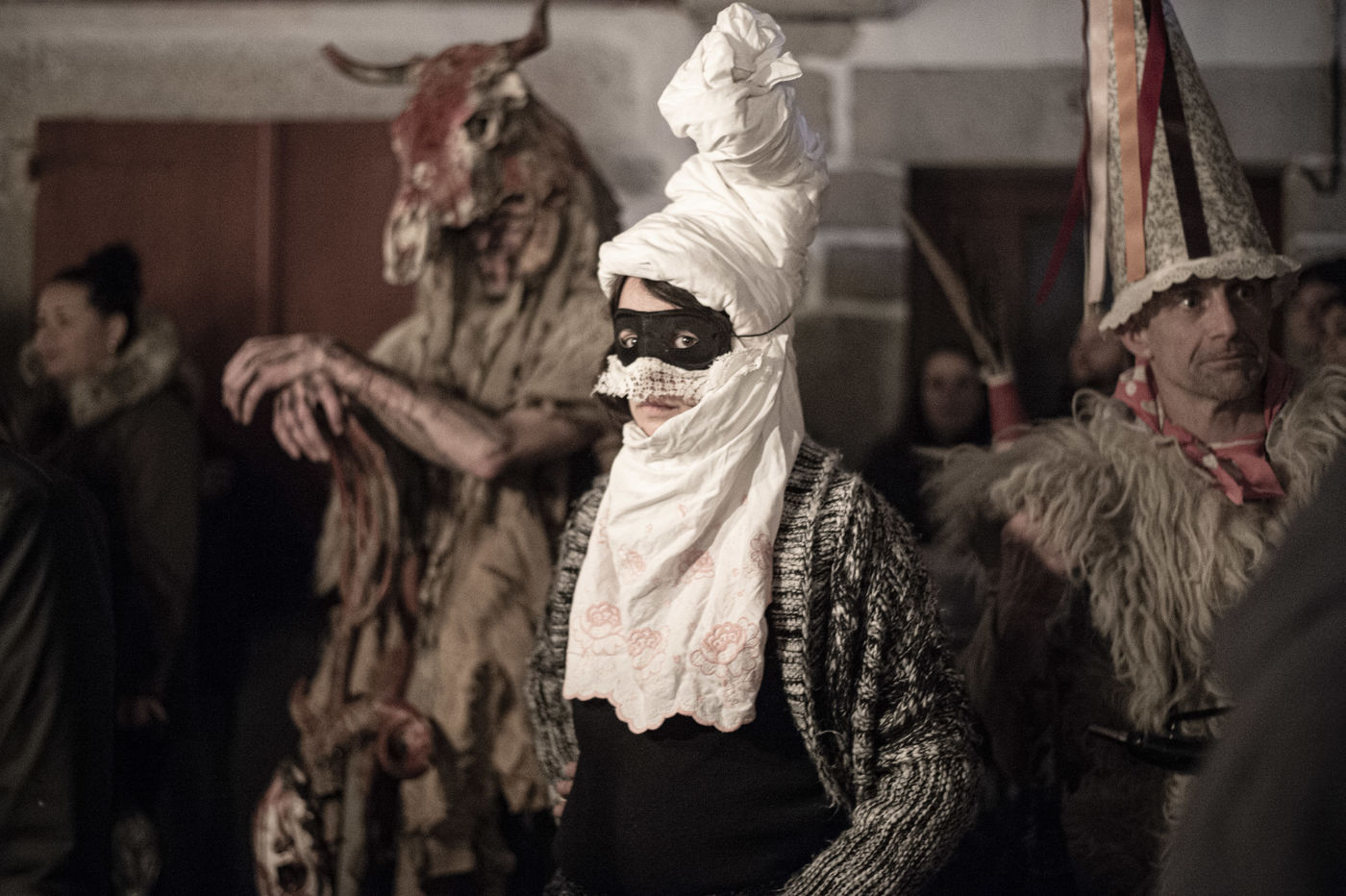Pour accéder à la série en entier, vous devez vous logger ou demander un compte Hans Lucas en cliquant ici.
Pays Basque - Carnavals en Labourd
Le Labourd est l'une des sept provinces historique du Pays Basque. De Bayonne, à Ciboure, en passant par Ustaritz, ce territoire est riche d'une tradition de carnaval, dont les Kaskarot sont les principaux protagonistes.
À Ustaritz, les Kaskarot sont un groupe de jeunes garçons qui vont danser de maison en maison durant tout le mois de février pour apporter bienfaits et protection au sortir de l'hiver. Les Kotilun Gorri, autres personnages du carnaval labourdin, les accompagnent pour faire la quête. Les tournées de Kaskarot se terminent le jour de mardi gras au centre d'Ustaritz avec la sortie de l'ours, des zirtzil et des danses animales.
L'ours sort également à Biarritz, pour le carnaval. Cornu et coiffé d'une mitre d'évêque, il ouvre la voie aux danseurs de la compagnie Maritzuli.
Traditionnellement, le carnaval se termine par un grand feu pour en finir avec San Pantzar, bouc émissaire de tous les malheurs de l'année écoulée. Cependant, les feux de « la nuit des sorcières » à Ciboure rappellent un triste épisode dans l'histoire du Labourd. Les bûchers de Pierre De Lancre où périrent de nombreuses femmes, accusées de sorcellerie.
Basque Country - Carnivals in Labourd
Labourd is one of the seven historical provinces of the Basque Country. From Bayonne, to Ciboure, by way of Ustaritz, this territory is rich of a carnival tradition, where the Kaskarot are the main protagonists.
In Ustaritz, the Kaskarot are a group of young boys who dance from house to house during the month of February to bring goodness and protection at the end of winter. The Kotilun Gorri, other characters of the Labourdin carnival, accompany them to make the quest. The tours of Kaskarot end on the day of Shrove Tuesday in the center of Ustaritz with the bear, the zirtzil and the animal dances.
The bear also comes out in Biarritz, for the carnival. Horned and wearing a bishop's mitre, he opens the way for the dancers from the Maritzuli company.
Traditionally, the carnival ends with a big fire to finish with San Pantzar, scapegoat of all the misfortunes of the past year. However, the fires of "the night of the witches" in Ciboure recall a sad episode in the history of Labourd. The stakes of Pierre De Lancre where many women perished, accused of witchcraft.
